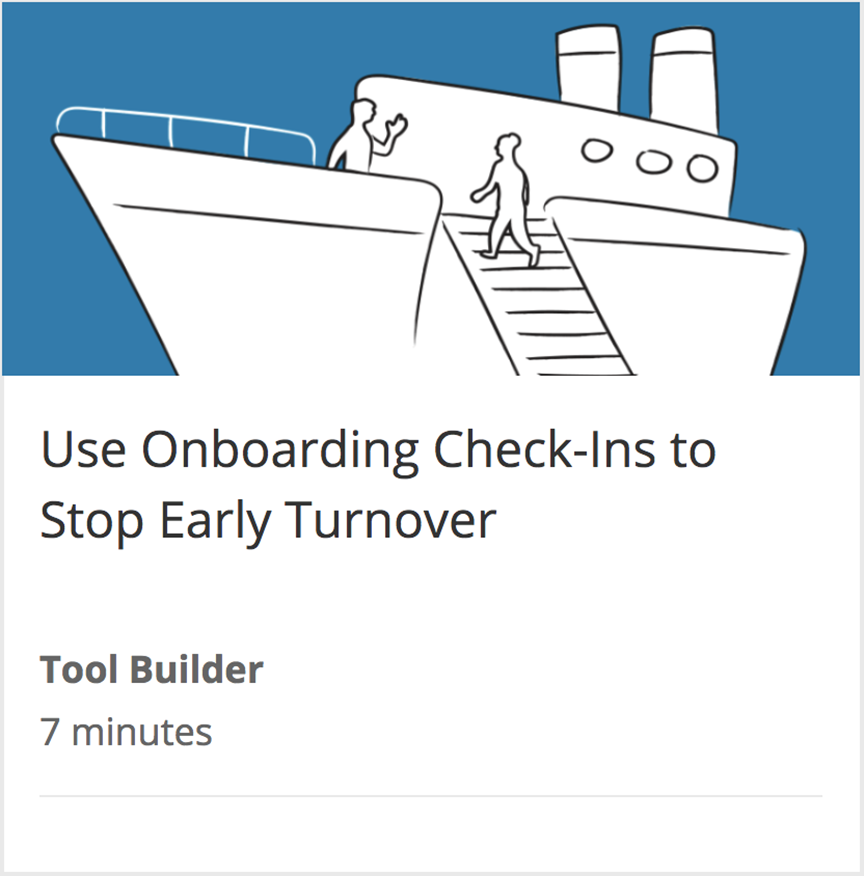Auto logout in seconds.
Continue LogoutRead Advisory Board's take: The key to stopping millennial turnover.
Millennials today make up more than one-third of the U.S. labor force, but at IU Health in Indiana, the generation comprises 41% of its staff. Amanda Bates, IU Health's VP of human resources, outlines four strategies the health system uses to retain them, Christopher Chenney reports for HealthLeaders Media.
A growing millennial workforce
At IU Health, millennials make up 59% of new hires, 51% of nurses, and 31% of physicians—and these percentages are expected to increase, according to Bates. "We employ a lot of millennials, and strategically as we look at growth and future hires, they will become more and more of our new hires," Bates said.
With this in mind, IU Health seeks to "strategically ... accommodate" the workers by making them the focus of the system's workforce strategy. Baker shares four strategies the health system implemented across its 16 hospitals to attract and retain millennial workers.
Adopt a flexible dress code
In response to changing attitudes about appearance, IU Health changed its dress code to allow staff to have piercings and tattoos, which are "defining characteristics" for a lot of millennials, Chenney writes.
The decision was not an easy one, but Bates said its patient advisory councils made a "big difference." She explained, "We found that what the patients really cared about was the quality of their care and the compassion of their caregivers. They cared less about what their caregivers looked like."
While the new dress code was largely met with "overwhelming acceptance," the move wasn't without some opposition and controversy. "[T]here was a small group of people who were sending me letters about selling out to tattoos and piercings," Bates said. In response, Bates pointed to changing cultural norms with the younger generation. "Millennials present differently than the baby boomers presented, and we need opportunity for that expression," she said.
Create opportunities for advancement
On top of the dress code change, IU Health established new career pathways to retain millennials, particularly medical assistants and nurses—roles that historically have had high turnover rates at IU Health.
The system hosted focus groups with medical assistants during which, Bates said we "found out that they wanted career development and career progression." She continued, "[W]e talked with them about the skills that would be of most benefit, then we developed opportunities for people to become trained and certified in those skills."
Since creating the new career pathways, Bates said, "Our turnover is down to the 10th percentile." She added, "Now, we have 65% of our medical assistants who have received promotions on our career ladder, which comes with pay increases and increased responsibility."
The system also established career ladders and pathways for non-clinical roles including finance, IT, and human resources.
Improve hiring and training practices
About 18 months ago, IU Health also updated its "old-fashioned" hiring process to be more appealing to millennials, Bates said.
Previously, the system required candidates to fill out a 30-minute computer application. Now, 65% of IU Health's applications are filled out on a mobile app. "[I]t takes just a few minutes," Bates said. "We significantly reduced the number of questions that we asked, and we have doubled the number of applications that we get."
The system also is adopting a texting app that allows recruiters to communicate with applicants through text messages rather than phone calls. To facilitate text-based communication the system created a database of standard screening questions that recruiters can auto-populate into a chat with a candidate.
IU Health also streamlined its orientation process to "reduc[e] the amount of time new hires spend in orientation before they join their units," Bates said. "For our nurses, we used to have service requirements before we would move them into operating rooms or ICUs, but we discontinued that."
The system also revamped trainings to be more "fun and social." For example, Bates said they created "an escape room program for new nursing hires." She explained, "They are broken into groups and have an hour to solve safety and quality puzzles. You need to try to beat the time of the other cohort teams in your training group."
Improve tuition reimbursement
Finally, Bates said that IU Health "improved tuition reimbursement" to provide millennials with more opportunities for continuing education and career advancement.
"We stopped making it a requirement for nurses to have a bachelor's degree and offered a generous tuition reimbursement. We doubled the number of academic programs that we would pay for," Bates said. One year after the changes were made, IU Health "tripled the number of people in our tuition reimbursement program," she said (Cheney, HealthLeaders Media, 2/20).
Advisory Board's take

Kate Vonderhaar, Practice Manager, HR Advancement Center
IU Health is one of many health care organizations that's recognized the importance—and the unique challenges—of recruiting and retaining millennials. As the largest generation in the labor force (and growing), millennials are now foundational in many organizations' workforces. Yet, many employers are struggling to understand and meet their needs. In particular, many organizations report high turnover with their millennial staff. A Gallup poll found that 60% of millennials are open to or looking for new employment opportunities, a figure 15% higher than non-millennial workers.
“A comprehensive strategy for retaining millennials requires more than engaging these staff.”
A comprehensive strategy for retaining millennials requires more than engaging these staff. Our research has found engagement doesn’t track as closely with loyalty for early-tenure staff as it does for more tenured staff. The good news is: If you can retain staff past the three-year mark, their loyalty more closely matches their engagement level.
So how can you keep staff beyond three years? Start by taking a close look at year one. Of all turnover at health care organizations, 30% happens among employees with less than one year of tenure.
There are three main reasons why new hires leave hospitals and health systems within their first year of employment:
- They don't feel a strong connection to their peers;
- They don't feel a strong connection to their manager; or
- They think they're underperforming.
The good news is that there is a straightforward way to address these common concerns: Check in with new millennial hires regularly (ideally within their first 30, 60, and 90 days) in order to surface their concerns. Many managers overlook these check-ins because they're busy or assume that the new hire needs time to find their footing. However, doing so is a key mistake. All too often, organizations invest a ton in new-hire orientation experiences which leave new hires engaged and excited to begin work. However, once the new hire starts, they can quickly feel a bit of a let-down.
Managers can prevent this drop in enthusiasm by carving out extra time to meet with new hires early. That way, managers are tapping into the excitement of starting a new job. They can also surface any potential concerns about interactions with coworkers, misperceptions about what the job entails, and early successes that might have gone overlooked.
For a list of the questions you should ask employees, when you should ask them, and the signals of a possible retention risk—be sure to download our Manager's Guide to New Hire Onboarding, which includes an editable discussion guide to jump-start meaningful conversations with new hires. And for more best practices aimed at retaining millennials specifically, view our research report on how to Stop Turnover in the First Three Years.
Get the Guide Stop New Hire Turnover
Finally, make sure you register for my colleague Micha'le Simmons' upcoming webconference on how to retain new hires, where she'll teach you how to identify which new hires are most at-risk of leaving, and strategies you can use to ensure that the hire's day one onwards is seamless and sets the tone for continued success.
Join our popular webconference series: 'Management Master Class'
Back by popular demand, our four-part webconference series will help you hone in on key leadership skills including simple steps to retain more staff, coach more effectively, and manage your limited time more effectively all in 30 minutes a week.
- Tuesday, Apr. 2 | The 7 conversations managers must have with employees
- Tuesday, Apr. 9 | How to deliver effective feedback
- Wednesday, Apr. 17 | The manager's guide to retaining new hires
- Tuesday, Apr. 23 | How to get more done (with less stress)
Don't miss out on the latest Advisory Board insights
Create your free account to access 1 resource, including the latest research and webinars.
Want access without creating an account?
You have 1 free members-only resource remaining this month.
1 free members-only resources remaining
1 free members-only resources remaining
You've reached your limit of free insights
Become a member to access all of Advisory Board's resources, events, and experts
Never miss out on the latest innovative health care content tailored to you.
Benefits include:
You've reached your limit of free insights
Become a member to access all of Advisory Board's resources, events, and experts
Never miss out on the latest innovative health care content tailored to you.
Benefits include:
This content is available through your Curated Research partnership with Advisory Board. Click on ‘view this resource’ to read the full piece
Email ask@advisory.com to learn more
Click on ‘Become a Member’ to learn about the benefits of a Full-Access partnership with Advisory Board
Never miss out on the latest innovative health care content tailored to you.
Benefits Include:
This is for members only. Learn more.
Click on ‘Become a Member’ to learn about the benefits of a Full-Access partnership with Advisory Board
Never miss out on the latest innovative health care content tailored to you.

